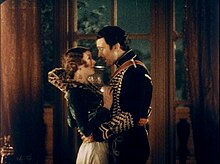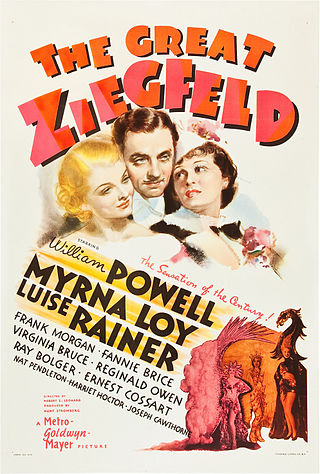
The Great Ziegfeld is a 1936 American musical drama film directed by Robert Z. Leonard and produced by Hunt Stromberg. It stars William Powell as the theatrical impresario Florenz "Flo" Ziegfeld Jr., Luise Rainer as Anna Held, and Myrna Loy as Billie Burke.
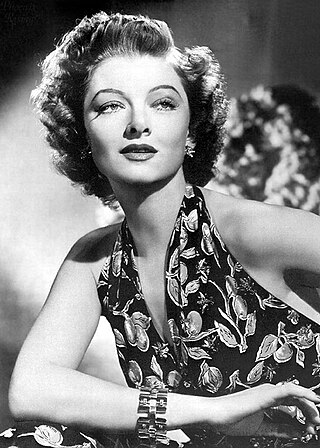
Myrna Loy was an American film, television and stage actress. As a performer, she was known for her ability to adapt to her screen partner's acting style.
This is a list of notable events in music that took place in the year 1930.

Jeanne Elizabeth Crain was an American actress. She was nominated for an Academy Award for Best Actress for her title role in Pinky (1949). She also starred in the films In the Meantime, Darling (1944), State Fair (1945), Leave Her to Heaven (1945), Centennial Summer (1946), Margie (1946), Apartment for Peggy (1948), A Letter to Three Wives (1949), Cheaper by the Dozen (1950), People Will Talk (1951), Man Without a Star (1955), Gentlemen Marry Brunettes (1955), The Fastest Gun Alive (1956), and The Joker Is Wild (1957).
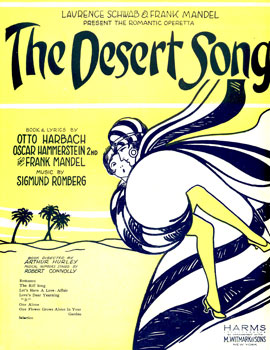
The Desert Song is an operetta with music by Sigmund Romberg and book and lyrics by Oscar Hammerstein II, Otto Harbach and Frank Mandel. It was inspired by the 1925 uprising of the Riffs, a group of Berber fighters, against French colonial rule in Morocco. It was also inspired by stories of Lawrence of Arabia aiding native guerrillas. Many tales romanticizing Saharan North Africa were in vogue, including Beau Geste and The Son of the Sheik.

The Show of Shows is a 1929 American pre-Code musical revue film directed by John G. Adolfi and distributed by Warner Bros. The all-talking Vitaphone production cost almost $800,000 and was shot almost entirely in Technicolor.

Song of the West is a 1930 American Pre-Code musical western film produced by Warner Bros., and photographed entirely in Technicolor. It was based on the 1928 Broadway musical Rainbow by Vincent Youmans (music), Oscar Hammerstein II (lyrics) and Laurence Stallings (book). It starred John Boles, Joe E. Brown and Vivienne Segal, and was the first all-color all-talking feature to be filmed entirely outdoors.

Golden Dawn is a 1930 Warner Bros. American pre-Code musical operetta film directed by Ray Enright that was photographed entirely in Technicolor. It stars Vivienne Segal, Walter Woolf King and Noah Beery. The film is based on the 1927 stage musical of the same name.

Sweet Kitty Bellairs is a 1930 American historical musical comedy film directed by Alfred E. Green. The film is based on the 1900 novel, The Bath Comedy by Agnes Castle and Egerton Castle. Shot entirely in Technicolor, the film stars Claudia Dell, Ernest Torrence and, Walter Pidgeon and is set in Bath, England in 1793.

Kiss Me Again is a 1931 American pre-Code musical operetta film filmed entirely in Technicolor. It was originally released in the United States as Toast of the Legion late in 1930, but was quickly withdrawn when Warner Bros. realized that the public had grown weary of musicals. The Warner Bros. believed that this attitude would only last for a few months, but, when the public proved obstinate, they reluctantly re-released the film early in 1931 after making a few cuts to the film.
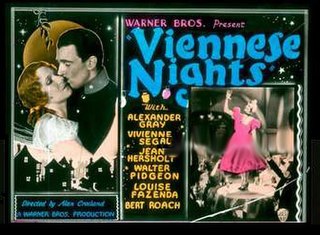
Viennese Nights is a 1930 American all-talking pre-Code musical operetta film directed by Alan Crosland and starring Alexander Gray, Vivienne Segal, Walter Pidgeon, Jean Hersholt, Bela Lugosi and Louise Fazenda. It was photographed entirely in Technicolor and released by Warner Brothers. Viennese Nights was the first original operetta written especially for the screen by Oscar Hammerstein II and Sigmund Romberg. It was filmed in March and April 1930, before anyone realized the extent of the economic hardships that would arrive with the Great Depression, which had begun in the autumn of the previous year. Although not a box office hit in the United States, the film had long box office runs in Britain and Australia. It is one of the earliest sound films to have a short pre-credit sequence.
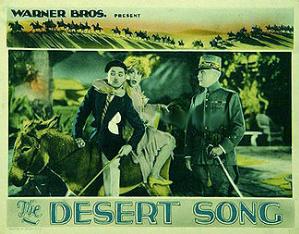
The Desert Song is a 1929 American pre-Code operetta film directed by Roy Del Ruth and starring John Boles, Carlotta King, Louise Fazenda, and Myrna Loy. It was photographed partly in two-color Technicolor, the first film released by Warner Bros. to include footage in color. The film included a 10-minute intermission during which music was played.
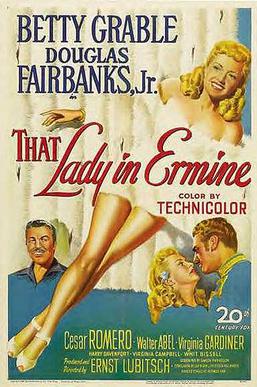
That Lady in Ermine is a 1948 American Technicolor musical film directed by Ernst Lubitsch. The screenplay by Samson Raphaelson is based on the 1919 operetta Die Frau im Hermelin by Rudolph Schanzer and Ernst Welisch.

Man-Proof is a 1938 American romantic comedy film directed by Richard Thorpe. The film is based on the 1937 novel The Four Marys written by Fannie Heaslip Lea.
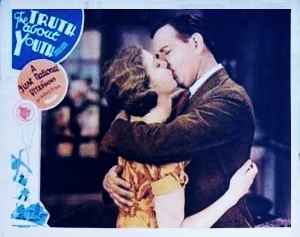
The Truth About Youth is a 1930 American pre-Code drama with songs produced and distributed by First National Pictures, a subsidiary of Warner Bros. Directed by William A. Seiter, the film stars Loretta Young, Conway Tearle, David Manners and Myrna Loy. It was based on the 1900 play When We Were Twenty-One, written by Henry V. Esmond.

The Lady in Ermine is a 1927 American silent romantic drama film directed by James Flood and produced by and starring Corinne Griffith, and distributed by First National Pictures. The film is now considered a lost film.

Whipsaw is a 1935 American crime drama film directed by Sam Wood and starring Myrna Loy and Spencer Tracy. Written by Howard Emmett Rogers, based on a story by James Edward Grant, the film is about a government agent working undercover traveling across the country with an unsuspecting woman, hoping she will lead him to her gang of jewel thieves. The film was produced by Harry Rapf for Metro-Goldwyn-Mayer, and was released on December 18, 1935, in the United States.
Operetta films are a genre of musical films associated with, but not exclusive to, German language cinema. The genre began in the late 1920s, but its roots stretch back into the tradition of nineteenth century Viennese operettas.
Humphrey Pearson was an American screenwriter and playwright of the 1930s. During his brief career, he penned a Broadway play and 22 screenplays. His promising career was cut short when he was found shot to death, under mysterious circumstances in his home, in early 1937.

RudolfSchanzer was an Austrian playwright and journalist. He is primarily known for the numerous operetta librettos that he wrote for composers such as Leo Fall, Jean Gilbert, Emmerich Kálmán, and Ralph Benatzky. He was born in Vienna and died in Italy where he committed suicide after his arrest by the Gestapo.

